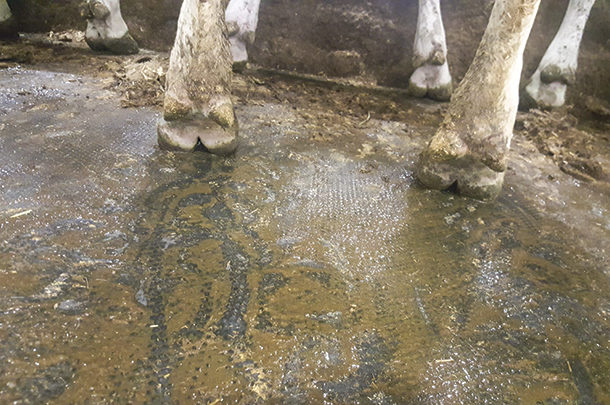One of the most common questions dairy farmers ask is how to create an effective program to control digital dermatitis (DD), which is often followed up with the statement that despite their best efforts to run frequent footbaths, they still seem to struggle with too many cases of DD.
To answer the question of how to create an effective DD control program, we need to understand how the bacteria causing this disease works and what is needed for it to thrive. Here are things we know:
- Treponemes (spirochete bacteria) on healthy skin will not result in digital dermatitis.
- The primary cause of DD is a breakdown in the immune system.
- Cases most often occur when the animal is stressed, at calving time and when heifers come into their first estrous cycle around 10 to 13 months.
- The spirochete bacteria needs compromised skin integrity in order to enter and begin the infection.
With these factors in mind, we then also know that if we implement a good nutritional program with added trace minerals, we can enhance the immune response and improve skin integrity. Then, by providing a clean, dry and well-ventilated environment that is properly stocked, with proper beds and flooring, we can further enhance immune response and improve skin integrity by improved feet and leg hygiene. Treponemes need a low-oxygen environment to thrive, so the dirtier the lower portion of the leg, the greater risk of DD and more likeliness of needing to implement a footbath program in heifer groups.
 A flashlight can help in getting a good look at the underside of the hoof. Photo by Jamie Sullivan.
A flashlight can help in getting a good look at the underside of the hoof. Photo by Jamie Sullivan.
 A flashlight can help in getting a good look at the underside of the hoof. Photo by Jamie Sullivan.
A flashlight can help in getting a good look at the underside of the hoof. Photo by Jamie Sullivan.
The key to DD control
I’ve never seen a herd get DD to a “manageable state” without controlling the problem in the heifer, dry cow and transition groups. In addition, herds that have been able to have all or at least the majority of the heifers free of the disease are able to basically eliminate the problem in the lactating herd or at least manage to have very few cases (about one acute case per 100 cows each month) with a very low-cost footbath prevention program.
Now our already busy producers (with more “to-do” on their lists than free time) are probably thinking: “Great, this guy is going to want me to run more footbaths that include heifer groups.” While that may be needed in some instances, that is not necessarily the case. But I do highly recommend weekly pen walks in your heifer groups starting at least at 9 to 10 months. Remember, we already know that heifers get stressed as they experience their first estrus.
Observing for lesions and treating such lesions immediately is key to limiting chronic animals before entering the lactating herd. This doesn’t have to be an added task; simply make it a routine to inspect feet when already in the pen doing other management duties. If there is poorer hygiene and/or heifers are mixed in the same barn as older animals, then there is the higher risk of exposure to DD-causing bacteria, and a footbath program may need to be implemented in heifer groups.
If you are running a proper footbath program in your milking herd, yet still not having success controlling digital dermatitis, maybe it’s time to focus your efforts on the source of the infection.









